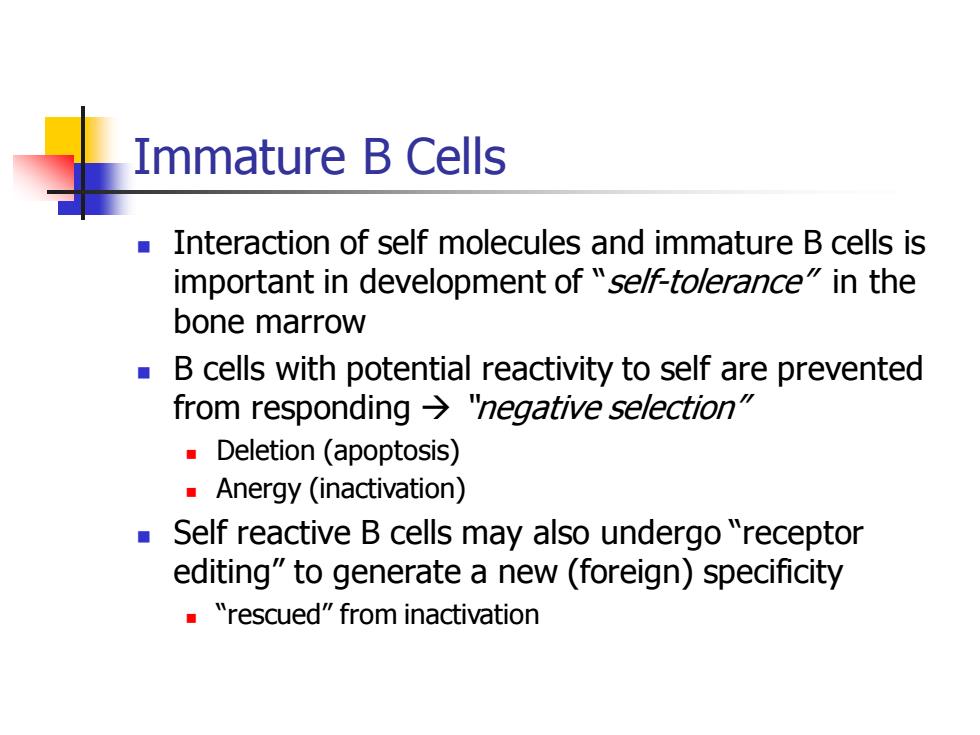
Immature B Cells Interaction of self molecules and immature B cells is important in development of "se/f-tolerance"in the bone marrow B cells with potential reactivity to self are prevented from responding "negative selection" Deletion (apoptosis) Anergy (inactivation) Self reactive B cells may also undergo receptor editing"to generate a new(foreign)specificity "rescued"from inactivation
Immature B Cells ◼ Interaction of self molecules and immature B cells is important in development of “self-tolerance” in the bone marrow ◼ B cells with potential reactivity to self are prevented from responding → “negative selection” ◼ Deletion (apoptosis) ◼ Anergy (inactivation) ◼ Self reactive B cells may also undergo “receptor editing” to generate a new (foreign) specificity ◼ “rescued” from inactivation

Mature B Cells Development of IgM+IgD+mature B cells Predominantly in bone marrow Can also occur in secondary lymphoid organs ■Activation Response to foreign Ag Occurs primarily in secondary lymphoid organs(lymph node and spleen)in the germinal centers Enlarge to become B cell "blasts" Proliferate and differentiate Plasma cells>class switching Memory B cells>class switch but non-proliferating,long-lived
Mature B Cells ◼ Development of IgM+IgD+ mature B cells ◼ Predominantly in bone marrow ◼ Can also occur in secondary lymphoid organs ◼ Activation ◼ Response to foreign Ag ◼ Occurs primarily in secondary lymphoid organs (lymph node and spleen) in the germinal centers ◼ Enlarge to become B cell “blasts” ◼ Proliferate and differentiate ◼ Plasma cells → class switching ◼ Memory B cells → class switch but non-proliferating, long-lived